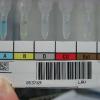
goodchild
Content Type
Store
Profiles
Forums
Blogs
Events
Frequently Asked Questions
Gallery
Downloads
Glossary
Links Directory
Questions
Jobs
Vendors
Everything posted by goodchild
-
Dansket, Would you be willing to share a screenshot of what your Type and Screen result entry screen looks like? Specifically curious of how you have established the interface of results from ProVue.
The person who set it up here added two extra fields, Provue BT and PVRH, which they insisted were necessary to be able to interface results.
I'm just now getting around to fixing the Type and Screen (if you notice, we still have anti-A,B under patient testing but we haven't used it as such in more than ten years). I've never done any result mapping for an interface and I want to warm my mind up for when I work on the interface for the Erytra in a few months.

Thanks in advance!



